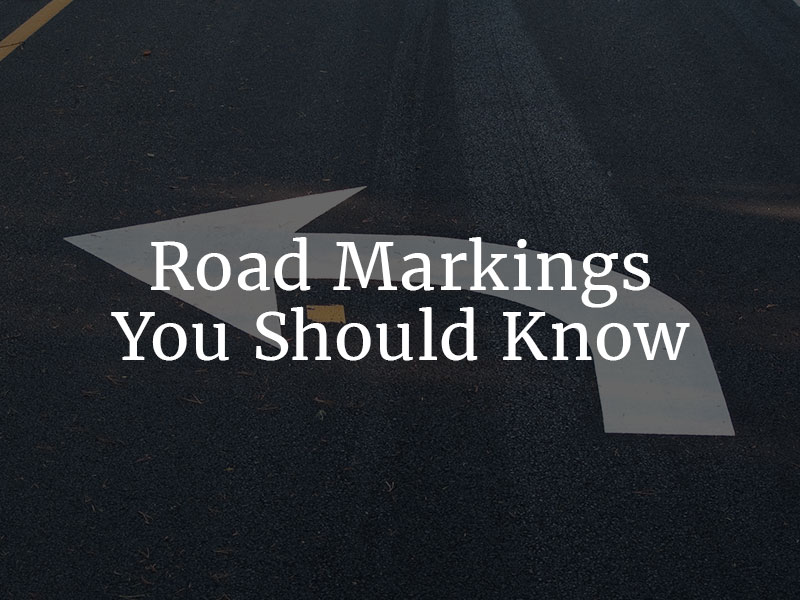Road Markings You Should Know
Part of your job as a driver is to obey traffic laws and roadway signs. You may know to stop at a stop sign and yield to pedestrians at crosswalks, but do you fully understand the meaning behind the markings on the road? A refresher on what each marking means could help you avoid an accident. Roadway marking meanings are consistent throughout the country.

White vs. Yellow Lines
When driving, pay attention to the color of the lines on the road. If they are yellow, they separate two lanes of traffic moving in opposite directions. You must stay on your side of a yellow line, or else you will be driving the wrong way. White lines indicate lanes of traffic moving in the same direction. Multiple lanes with white lines between them mean you can move from lane to lane, as long as you change lanes safely.
The yellow line should always be to the left of you and the white line to the right. If you are driving to the left of a yellow line, you are driving the wrong way on the road. This could lead to a fatal head-on collision. The yellow center line should always be on your left as a driver. The only exception is if you cross over a broken yellow line temporarily to pass the driver in front of you. Do not hover in the wrong lane for longer than is necessary.
Broken vs. Solid Lines
It is also important to notice whether the lines on the road are solid or broken. If they are broken, you have the right to cross the line. You should never, however, cross solid lines. The same rules apply to both yellow and white lines. The only time you may cross a solid line is if you are turning. A broken yellow line means you are free to pass, but you should do so quickly since you will be temporarily riding in the wrong direction. Only pass a vehicle by crossing a broken yellow line when you can see far enough ahead to ensure it is safe.
If you are riding next to a broken white line, you can cross when it is safe and remain in the destination lane. You do not need to cross back over into your original lane. The line closest to you will determine whether you can cross. If the line closest to you is solid but the line next to it is broken, you may not cross. The person on the other side of the line may cross instead. If you see double yellow or white lines, no one can cross on either side.
You will also see a solid white line on the side of the road. This line tells you where to keep your tires so you avoid accidentally driving off the side of the road. You might hear rumbled strips if you cross over a solid white line on the edge of a roadway. If your tire falls off the side of the road, you could be at risk of an accident. Do not overcorrect or yank the steering wheel. Instead, take your foot off the gas and calmly move the wheel to steer your vehicle back within the solid white line.
Other Road Markings
Lines are the most common symbols you will see painted on the pavement in California. You may also see other roadway markings, however, such as sharrows. Sharrows are shared lane arrows – two arrows together. They signal that both motorists and bicyclists may use the lane. Most sharrows also have bicycle symbols painted beneath them.
If you see arrows in the road, they indicate turn lanes. An arrow in your lane means you must drive in that direction. You cannot turn in a lane with a straight arrow. A white diamond symbol indicates a reserved lane for high-occupancy vehicles. Driving in a carpool lane without two or more passengers can lead to expensive fines in California. A white line going horizontally across a roadway is a stop line, usually used in conjunction with stoplights or stop signs. Your tires must stop at or before the white stop line. Following all roadway markings can help you prevent an accident.

